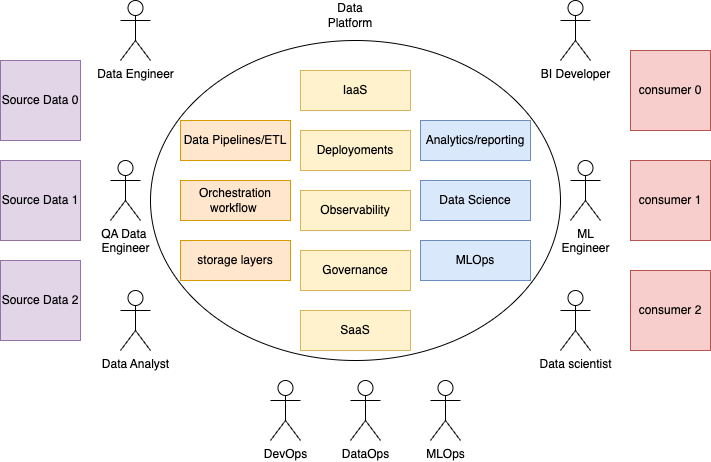Orchestrate Data Team Leadership: Leadership in the Revolutionary AI Renaissance
Introduction
While some industry voices suggest that data teams are predisposed to failure, this perspective overlooks a crucial reality: many teams simply lack proper setup and leadership guidance from the start. The transition from being a skilled individual contributor to leading a data team often comes with minimal mentorship or direction, leaving new leaders to navigate complex challenges alone.This learnings aims to provide essential insights data team leadership, covering crucial aspects from business understanding to team structure and quality management.

Deep Business Understanding for data team leadership: Your Foundation for Success
The cornerstone of effective data leadership isn’t technical expertise—it’s business acumen.
As emphasized by Tom Rampley, Head of Data at LastPass, “Understanding the business should be your top priority.”
While there’s often emphasis on making businesses more data-literate, equal attention must be paid to making data professionals business-literate.
This means:
- Actively engaging with business stakeholders
- Understanding industry-specific processes and workflows
- Learning how business operations translate into data patterns
- Becoming fluent in business terminology and metrics
As Veronika Durgin, VP of Data at Saks, points out, data teams become indispensable when they align with critical company initiatives. To move beyond being a mere support function, deep business integration is essential.
Communication: Speaking the Business Language
It is very important to speak business language. Data team often use heavy technical terms like glue / spark / lambda / sagemaker / pandas / series / S3 / parquet / avro etc, while often tech teams do not understand lack of technical knowledge from the business stockholders. When they get lost in your terminologies, tech team likely to be ignored from future discussions.
“Never talk about data technology, infrastructure, or queries with people outside the data team — they just don’t care.” Ethan Aaron CEO of Portable
Jeff Nemecek, Director of Engineering & Architecture at The Walt Disney Company, offers valuable insight on this topic “Translate technical concepts into functional business terms”
Instead of discussing specific technologies like Snowflake or Airflow, focus on business functions and outcomes:
- Replace technical tool names with functional descriptions
- Explain processes in business-relevant terms
- Define clear terminology to prevent misunderstandings
- Keep technical discussions within the data team
Remember, If you find yourself explaining SQL queries to executives, you’ve likely missed the mark on effective communication.
Data Quality: The Foundation of Trust
Data accuracy isn’t just about numbers—it’s about credibility. As industry experts note, even small discrepancies can have significant consequences:
- Minor errors today can cascade into major discrepancies tomorrow
- Loss of trust can lead to the creation of shadow data teams
- Departments may begin maintaining separate data silos
- Rebuilding lost credibility is significantly harder than maintaining it
Eric Gonzalez, VP of Business Intelligence Architecture at Eastern Bank, warns that Poor data quality often results in departments creating their own isolated data processes when they lose faith in enterprise data.
I have explained strategic approach to handle data quality consistency here. The importance of data quality in any data strategy becomes not just a matter of operational efficiency but a cornerstone of organizational success.
Vendor Relations and Technology Decisions
When evaluating vendor claims and new technologies, maintain a balanced perspective:
- Consider historical examples like the schema-on-read trend
- Evaluate new methodologies based on practical application, not just theoretical benefits
- Understand that best practices evolve over time
- Remember that vendor recommendations often align with their product offerings
- Vendor locking is real thing, sometimes it’s too late when you realize.
Strategic Team Structure and Role Definition
Data teams require intentional structure and clear role definitions:
- Distinguish between data engineering / data science / DataOps / MLOps / DevOps responsibilities
- Establish clear ownership of core data infrastructure
- Create appropriate boundaries between foundational data work and analytics
- Allow flexibility in higher-level analytics while maintaining strict control over core data assets
- For data engineering team, have a clear distinguish between expertise level. Eg. core data pipeline / business driven data modeling / infrastructure component etc..

As Bill Shube from Lego Group suggests, consider allowing analysts and business users to handle the “analytics final mile” while maintaining strong governance over core data infrastructure.
Conclusion
Leading a data team successfully requires more than technical expertise. It demands business acumen, strategic thinking, and careful attention to team structure and data quality. While the challenge of data team leadership is significant, failure isn’t inevitable. Success comes from intentional leadership, clear communication, and a strong foundation of reliable data processes.
For new data leaders, this guide serves as a starting point. The key is to approach leadership with intention, focus on business value, and maintain high standards for data quality and team organization.





Leave a Reply